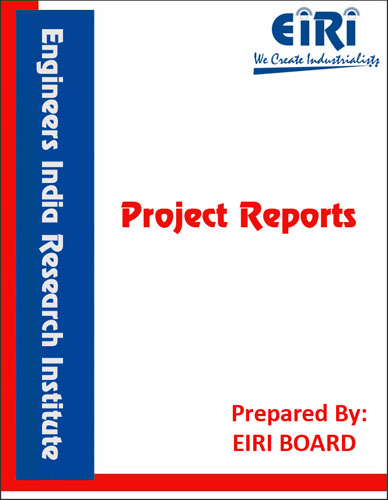The project report includes Present Market Position and Expected Future Demand, Market Size, Statistics, Trends, SWOT Analysis and Forecasts. Report provides a comprehensive analysis from industry covering detailed reporting and evaluates the position of the industry by providing insights to the SWOT analysis of the industry.
With the exception of a few materials such as polyethyl methacrylate, nylon etc., the majority of plastics has to be mixed with other ingredient to process them conveniently. While some of the ingredients act mainly as cheapening agent with out any way influencing physical or chemical properties, the majority of them are incorporated because they have definite & significant properties of the moulded article.
The thermoplastic, which can be reprocessed even after being brought to solid stage from plastic stage, like polyethylene. PVC, polystyrene, polyamides, cellulosic, acrylics, acetates etc. are hard, brittle & poor in mechanical properties where as when mixed with suitable plasticizer can be processed more conveniently by process like extrusion, injection & blow moulding. Just as fillers are absolutely essential for a thermosetting moulding powders, plasticizers are indispensable for termoplastics, particularly cellulosic.
Thus for plastic material to exhibit flexibility resilience & melt, flow, it must be `plasticizer’. Government of India has reserved the manufacture of D.E.P. in small scale sector only to secure small scale manufacturers. So all the facilities regarding raw materials procurement, marketability levies and taxes concessions etc are available to this unit also.
All the plant & machineries are also indigenously available. Therefore there is no hurdle in setting up this unit either with in it or by the addition of an added substance which is knows as plasticizers. Without this, it would not be possible to make plastic sheeting, film & other flexible forms of plastics.
There are more than 350 types of plasticizers in the market all over the world and they are classified on the basis of chemical composition such as phthalates, phosphates, adipates epoxy etc. and on the basis of performance character such as primary secondary etc.
Among plasticizers, phthalates which are pthelic acid esters of boiling alcohols are the minor product of application & form nearly 70% of total plastisizer consumption. There are many type of phthalates which are used for this purposes, however their reprocessing is the same. The proposed scheme envisages the manufacture of diethylphthalate (DEP) in a small scale. The same set up of equipment may be utilisted for the manufacture of other, as necessary.
A plasticizer or softener is a substance or material incorporated in a material (usually a plastic or elastomer) to increase its flexibility, workability or distensibility. A plasticiser may reduce the melt viscosity, lower the temperature of the second order transition or lower the elastic modulus of the melt.
Diethyl phthalate (DEP) is a phthalate ester, namely the diethyl ester of phthalic acid. It is a clear substance that is liquid at room temperature and which does not occur in nature. It as a faint, disareeable odor and can be transferred from the plastics that contain it When burned, DEP produces toxic gases.
Since the compound is a suitable solvent for many organic molecules, it is often used to bind cosmetics and fragrances. Other industrial uses include plasticizers, detergent bases and aerosol sprays. Because of the frequent dermal exposure of humans to the chemical, the question of toxicity is crucial. Several studies suggest that DEP can cause damage to the nervous system as well as to the reproductive organs in males and females.
INTRODUCTION
USES & APPLICATIONS
MARKET POSITION
DEP EXPORT AND IMPORT FIGURES
DETAILED EXPORT DATA OF DIETHYL PHTHALATE DEP
DETAILED IMPORT DATA OF DIETHYL PHTHALATE
DYES & DYE INTERMEDIATES/PIGMENTS/OPTICLE BRIGHTNER
DETAILED EXPORT DATA OF DIETHYL PHTHALATE DEP
DETAILED IMPORT DATA OF DIETHYL PHTHALATE
MANUFACTURERS/EXPORTERS/SUPPLIERS OF DIETHYL PHTHALATE (DEP)
ESTIMATED SHARE OF DIFFERENT PHTHALATE PLASTIEIZERS IN TOTAL
PHTHALATES PLASTICIZERS
PROPERTIES OF PLASTISIZERS
RAW MATERIALS DETAILS
MANUFACTURING PROCESS
PROCESS FLOW SHEET FOR DEP MANUFACTURE
PRINCIPLES OF PLANT LAYOUT
PLANT LOCATION FACTORS
EXPLANATION OF TERMS USED IN THE PROJECT REPORT
PROJECT IMPLEMENTATION SCHEDULES
PLANT LAYOUT
SUPPLIERS OF RAW MATERIAL
ACTIVATED CARBON MANUFATURERS & EXPORTERS
INTERNATIONAL PROCESS PLANTS AND EQUIPMENT
SUPPLIERS OF PLANT & MACHINERY
APPENDIX – A :
1. COST OF PLANT ECONOMICS
2. LAND & BUILDING
3. PLANT AND MACHINERY
4. FIXED CAPITAL INVESTMENT
5. RAW MATERIAL
6. SALARY AND WAGES
7. UTILITIES AND OVERHEADS
8. TOTAL WORKING CAPITAL
9. COST OF PRODUCTION
10. PROFITABILITY ANALYSIS
11. BREAK EVEN POINT
12. RESOURCES OF FINANCE
13. INTEREST CHART
14. DEPRECIATION CHART
15. CASH FLOW STATEMENT
16. PROJECTED BALANCE SHEET



